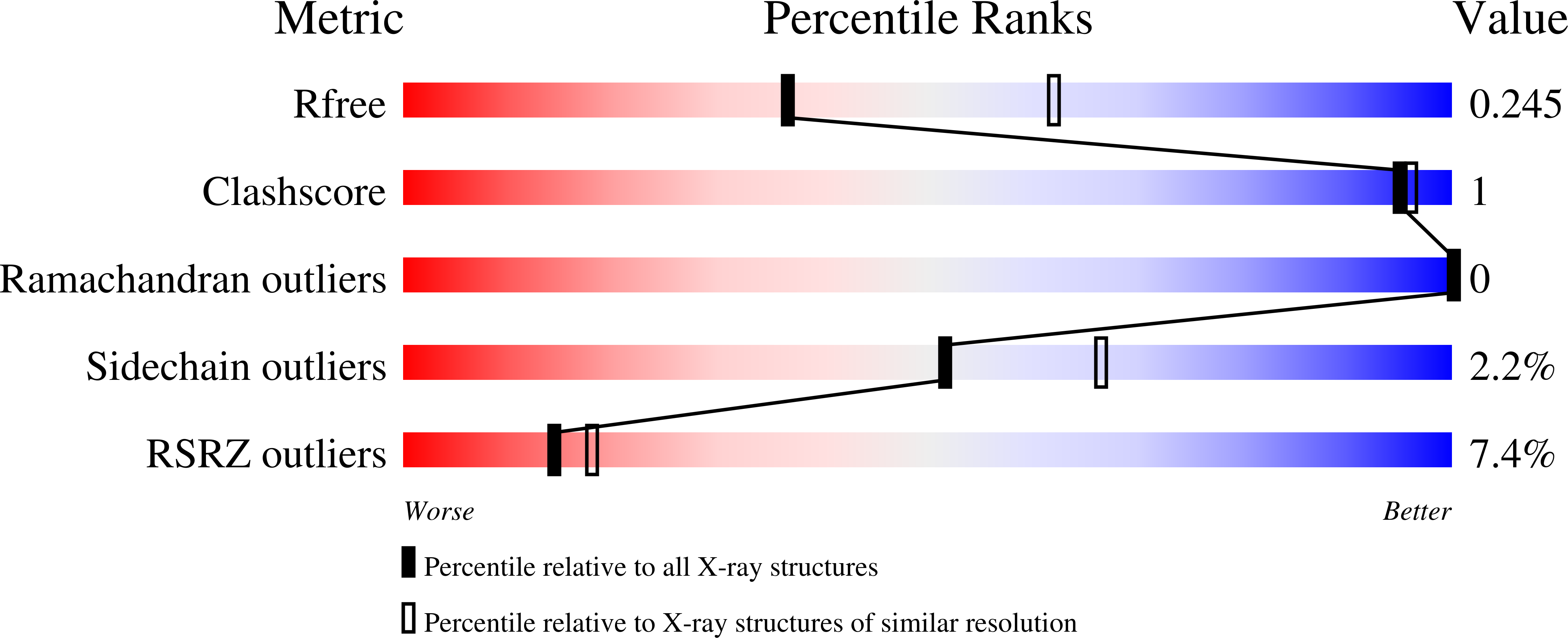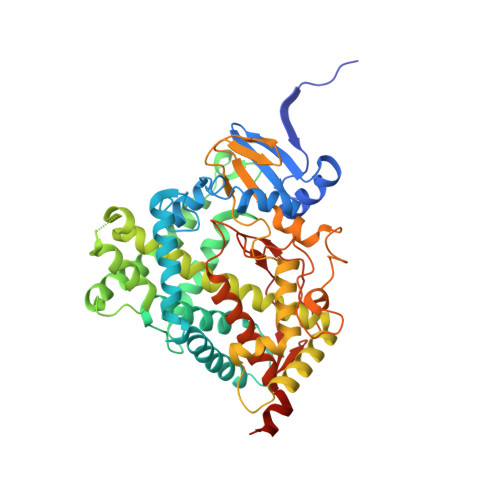Structures of Human Steroidogenic Cytochrome P450 17A1 with Substrates.
Petrunak, E.M., DeVore, N.M., Porubsky, P.R., Scott, E.E.(2014) J Biol Chem 289: 32952-32964
- PubMed: 25301938
- DOI: https://doi.org/10.1074/jbc.M114.610998
- Primary Citation of Related Structures:
4NKV, 4NKW, 4NKX, 4NKY, 4NKZ - PubMed Abstract:
The human cytochrome P450 17A1 (CYP17A1) enzyme operates at a key juncture of human steroidogenesis, controlling the levels of mineralocorticoids influencing blood pressure, glucocorticoids involved in immune and stress responses, and androgens and estrogens involved in development and homeostasis of reproductive tissues. Understanding CYP17A1 multifunctional biochemistry is thus integral to treating prostate and breast cancer, subfertility, blood pressure, and other diseases. CYP17A1 structures with all four physiologically relevant steroid substrates suggest answers to four fundamental aspects of CYP17A1 function. First, all substrates bind in a similar overall orientation, rising ¡«60¡ã with respect to the heme. Second, both hydroxylase substrates pregnenolone and progesterone hydrogen bond to Asn(202) in orientations consistent with production of 17¦Á-hydroxy major metabolites, but functional and structural evidence for an A105L mutation suggests that a minor conformation may yield the minor 16¦Á-hydroxyprogesterone metabolite. Third, substrate specificity of the subsequent 17,20-lyase reaction may be explained by variation in substrate height above the heme. Although 17¦Á-hydroxyprogesterone is only observed farther from the catalytic iron, 17¦Á-hydroxypregnenolone is also observed closer to the heme. In conjunction with spectroscopic evidence, this suggests that only 17¦Á-hydroxypregnenolone approaches and interacts with the proximal oxygen of the catalytic iron-peroxy intermediate, yielding efficient production of dehydroepiandrosterone as the key intermediate in human testosterone and estrogen synthesis. Fourth, differential positioning of 17¦Á-hydroxypregnenolone offers a mechanism whereby allosteric binding of cytochrome b5 might selectively enhance the lyase reaction. In aggregate, these structures provide a structural basis for understanding multiple key reactions at the heart of human steroidogenesis.
Organizational Affiliation:
From the Department of Medicinal Chemistry, University of Kansas, Lawrence, Kansas 66045 and.
















